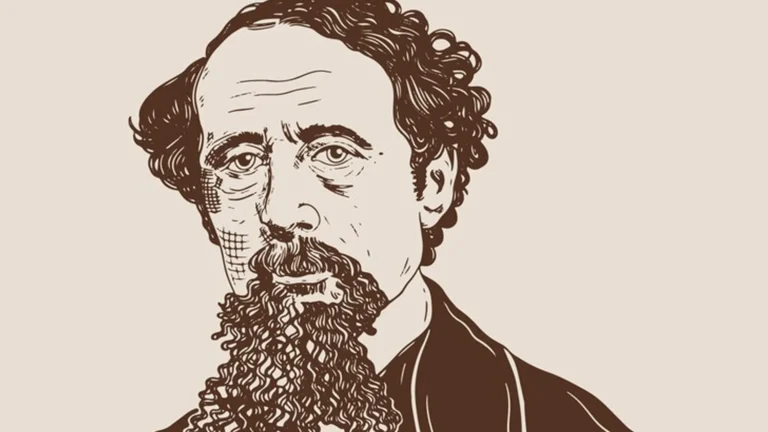Conrad Peutinger II, born in 1475, is a remarkable figure in the realm of cartography and geography. His contributions to early mapping are not only significant for their historical value but also for their influence on the evolution of modern geography. In this article, we will delve into the life and works of Conrad Peutinger, exploring his innovative mapping techniques and the lasting impact he has had on the field of cartography.
TRENDING
Hassle-Free Moving: Your Guide to a Smooth Transition
Who Was Conrad Peutinger II?
Early Life and Background
Conrad Peutinger II was born in Augsburg, Germany, into a prominent family. His father, Hans Peutinger, was a wealthy patrician, which afforded Conrad the opportunity to receive a comprehensive education. He studied at the University of Freiburg and the University of Leipzig, where he developed a keen interest in the humanities, particularly history, geography, and cartography.
Career and Contributions
Peutinger served as a city councilor and a diplomat, roles that required him to travel extensively across Europe. His journeys provided him with firsthand experience of various regions, cultures, and landscapes, which he would later incorporate into his cartographic works.
The Peutinger Table: A Milestone In Cartography
What is the Peutinger Table?
One of Conrad Peutinger’s most notable achievements is the creation of the Peutinger Table, an ancient Roman road map that illustrates the routes of the Roman Empire. Although the original map has been lost, a 12th-century copy exists, which provides invaluable insights into Roman geography.
Features of the Peutinger Table
The Peutinger Table is a unique and complex representation of geographical information. It stretches approximately 6.75 meters in length and is designed as a linear map, emphasizing the connectivity of roads rather than geographical accuracy. Key features include:
- Road Networks: The map highlights the extensive network of Roman roads, showing distances between cities and significant landmarks.
- Cities and Settlements: Major cities of the Roman Empire are prominently marked, providing a sense of scale and importance.
- Cultural Landmarks: The map also notes significant cultural and geographical features, such as mountains, rivers, and notable sites.
Significance of the Peutinger Table
The Peutinger Table is significant for several reasons:
- Historical Insight: It offers a glimpse into the infrastructure and organization of the Roman Empire.
- Influence on Later Mapping: The design and methodology used in the Peutinger Table influenced future cartographers and their approaches to map-making.
- Cultural Exchange: The table serves as a testament to the cultural exchange that occurred during the Roman period, highlighting the interconnectedness of different regions.
The Influence Of Conrad Peutinger On Cartography
Innovation in Mapping Techniques
Conrad Peutinger’s work laid the groundwork for several innovations in mapping techniques. He emphasized the importance of accuracy in representing geographical features and distances, a concept that was groundbreaking for his time. His meticulous approach to collecting and synthesizing geographical data set a new standard for cartographers.
Collaborations and Influence
Peutinger collaborated with notable scholars and cartographers, such as Martin Waldseemüller, who is often credited with creating one of the first modern world maps. These collaborations fostered a spirit of inquiry and innovation in cartography, encouraging others to explore and document the world around them.
Legacy in Modern Cartography
The influence of Conrad Peutinger can still be seen in modern cartography. His emphasis on accuracy, detail, and the representation of transportation networks paved the way for contemporary mapping practices. The evolution of maps from simple representations to complex, data-driven visualizations can trace its roots back to the foundational work of Peutinger and his contemporaries.
The Intersection Of Cartography And History
The Role of Cartography in Understanding History
Cartography is more than just the art of map-making; it is a powerful tool for understanding history. Maps provide context to historical events, illustrating how geography influences political, cultural, and social developments. Conrad Peutinger’s work exemplifies this intersection, as his maps not only documented the physical landscape but also reflected the historical narratives of the time.
The Importance of Historical Maps
Historical maps are essential for historians, geographers, and researchers. They offer insights into:
- Territorial Changes: Understanding how borders and territories have shifted over time.
- Cultural Landscapes: Exploring how human activities have shaped and transformed landscapes.
- Trade and Communication: Analyzing trade routes and communication networks that have evolved through history.
The Legacy Of Conrad Peutinger II
Honors and Recognition
Conrad Peutinger’s contributions to cartography have been recognized posthumously. Various institutions and scholars have honored his work, acknowledging the impact he had on the field. Today, his legacy is celebrated in academic circles and among enthusiasts of historical geography.
Modern Interpretations and Studies
Modern scholars continue to study the Peutinger Table and other works of Conrad Peutinger. Advanced technologies, such as GIS (Geographic Information Systems), allow researchers to analyze his maps in new ways, providing fresh insights into the geographical knowledge of the past.
The Enduring Influence of Early Mapping
The legacy of early mapping, as exemplified by Conrad Peutinger, remains relevant today. As society becomes increasingly interconnected, the importance of understanding our geographical roots becomes ever more critical. The work of early cartographers informs contemporary discussions about geography, culture, and global dynamics.
Conclusion
Conrad Peutinger II’s contributions to early mapping and cartography are invaluable. His dedication to accuracy, detail, and the representation of geographical networks has had a lasting impact on the field. The Peutinger Table stands as a testament to his vision and innovation, providing insights into the world of the Roman Empire while influencing generations of cartographers.
As we explore the evolution of mapping practices, it is essential to recognize the foundational work of figures like Conrad Peutinger, whose legacy continues to shape our understanding of geography and history today.
ALSO READ: Unveiling WAAA-117: Everything You Need To Know
FAQs
What is the Peutinger Table?
The Peutinger Table is a Roman road map created by Conrad Peutinger II, which illustrates the extensive road network of the Roman Empire. Although the original map is lost, a 12th-century copy exists, offering significant insights into Roman geography and infrastructure.
What were the main features of the Peutinger Table?
The Peutinger Table features a linear representation of the Roman road network, showing distances between cities, major cultural landmarks, and geographical features such as rivers and mountains.
How did Conrad Peutinger influence modern cartography?
Conrad Peutinger emphasized accuracy and detail in mapping, setting a new standard for cartographers. His work laid the groundwork for modern mapping practices, influencing subsequent generations of cartographers.
Why are historical maps important?
Historical maps are important as they provide context for historical events, help analyze territorial changes, and offer insights into cultural landscapes and trade routes throughout history.
What is the significance of Conrad Peutinger’s work today?
Conrad Peutinger’s work remains significant today as it informs contemporary discussions about geography, culture, and global dynamics. His contributions are recognized in academic circles and continue to inspire studies in historical geography.

